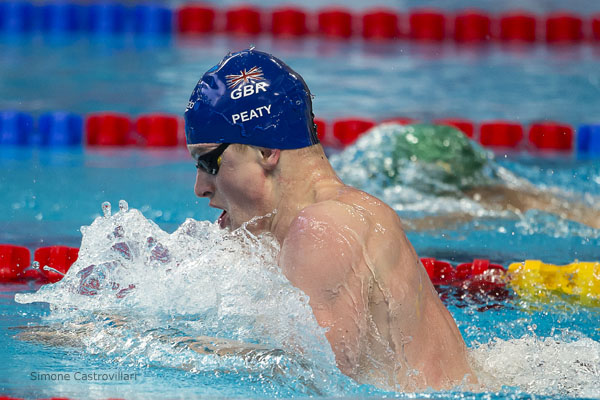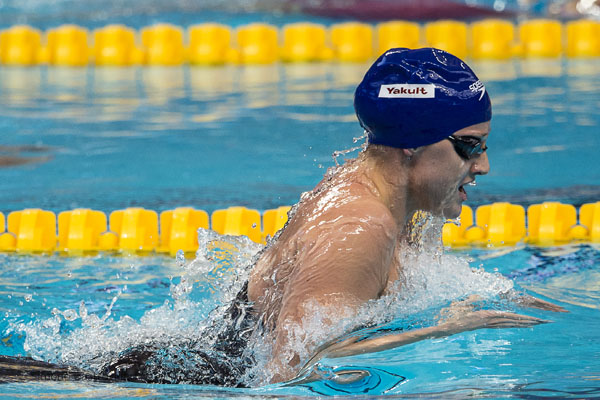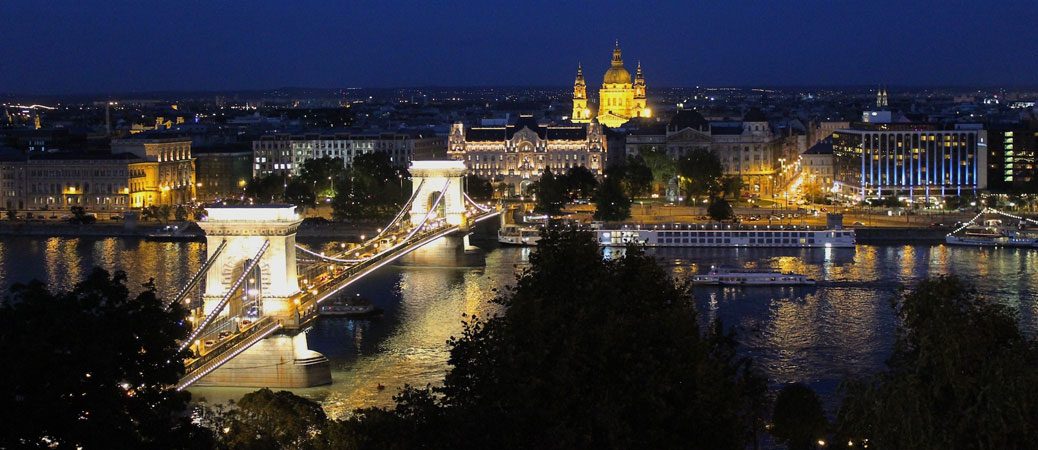“In this world nothing can be said to be certain, except death and taxes”. So said Benjamin Franklin in an oft quoted line. Well for Britain’s swimmers, right now they could probably add “tough qualifying times” to the grim reaper and the taxman given the way selection for major championships has gone in the Spice-Furniss era. The National Performance Director and Head coach combo would probably retort with another idiom: “if it ain’t broke don’t fix it”. And with good reason, Britain as it is coming off best ever results at both World Championships and Olympic Games.
All of which is a roundabout way of saying that for those aiming to make the British team for the 2017 World Championships in Budapest will need to be at the top of their game in Sheffield next week if they want to be on their way to Hungary. Packing their calculators once again will also be beneficial since by and large the selection policy follows the pattern that has been set over the last three years. Here’s how selection will work out:

| TABLE 1 | Women | Men |
| 50 Freestyle | 0:24.13 | 0:21.54 |
| 100 Freestyle | 0:53.08 | 0:47.91 |
| 200 Freestyle | 1:55.25 | 1:45.45 |
| 400 Freestyle | 4:03.43 | 3:43.84 |
| 800/1500 Freestyle | 8:20.18 | 14:48.60 |
| 100 Backstroke | 0:58.76 | 0:52.74 |
| 200 Backstroke | 2:07.17 | 1:55.89 |
| 100 Breaststroke | 1:06.29 | 0:59.01 |
| 200 Breaststroke | 2:22.33 | 2:07.73 |
| 100 Butterfly | 0:56.81 | 0:51.22 |
| 200 Butterfly | 2:06.52 | 1:54.14 |
| 200 Individual Medley | 2:09.56 | 1:57.11 |
| 400 Individual Medley | 4:34.08 | 4:11.62 |
If results from Olympic trials were replicated this year, the only three swimmers, Adam Peaty, James Guy twice and Hannah Miley would make this year’s standard, but on form you can certainly add Jazz Carlin and Siobhan-Marie O’Connor to those you would expect to make the automatic cut. In the whole of 2016 only 6 men’s swims and 7 women’s were inside those times and that includes the now retired Francesca Halsall.
So the number in this group is likely to be small. Certainly we should expect a number of British records broken if more than a handful of swimmers are selected by right; 9 of the times are equal to or faster than the current national mark (highlighted red in the table above)
As was introduced for the Olympics last year, once the automatic selections are out of the way there are six wildcard spots up for grabs. How they will be used remains to be seen, there could be relay extras as there were last year, but consider them a safety net if nothing else. Barring extreme events, GB is not going to Budapest without Adam Peaty for example.

It’s not clear how consideration times have been set, but they are faster than the equivalent “+2%” cut off that was used last year in all but 9 events and pretty close in those – see the comparison below; 2017 times highlighted green are slower than the equivalent from 2016.
| 2017 TABLE 2 | 2016 TABLE 2+2% | |||
| Women | Men | Women | Men | |
| 50 Freestyle | 0:24.56 | 0:22.00 | 0:24.71 | 0:21.94 |
| 100 Freestyle | 0:54.25 | 0:48.33 | 0:53.90 | 0:48.60 |
| 200 Freestyle | 1:57.21 | 1:46.58 | 1:57.36 | 1:46.68 |
| 400 Freestyle | 4:06.86 | 3:47.16 | 4:07.41 | 3:47.97 |
| 800/1500 Freestyle | 8:26.19 | 15:00.40 | 8:27.12 | 15:00.35 |
| 100 Backstroke | 59.58 | 0:53.60 | 0:59.69 | 0:53.47 |
| 200 Backstroke | 2:09.47 | 1:57.00 | 2:08.53 | 1:55.91 |
| 100 Breaststroke | 1:06.90 | 1:00.15 | 1:06.94 | 1:00.21 |
| 200 Breaststroke | 2:24.48 | 2:10.52 | 2:24.76 | 2:10.46 |
| 100 Butterfly | 0:57.81 | 0:51.75 | 0:57.71 | 0:51.82 |
| 200 Butterfly | 2:07.98 | 1:55.83 | 2:08.15 | 1:56.03 |
| 200 Individual Medley | 2:10.75 | 1:58.15 | 2:10.90 | 1:58.39 |
| 400 Individual Medley | 4:37.67 | 4:13.42 | 4:36.57 | 4:13.71 |
| 4 x 100 Freestyle | 3:37.57 | 3:14.91 | 3:37.16 | 3:14.55 |
| 4 x 200 Freestyle | 7:53.66 | 7:11.01 | 7:54.80 | 7:11.82 |
| 4 x 100 Medley | 3:59.47 | 3:34.18 | 3:59.16 | 3:34.56 |
There’s much more scope for people to make these times however; approximately 29 swims in the 2016 rankings would be under the consideration cut off, so it’s where most of the team should be expected to be picked. We’ll be tracking the selection standings once again as the results come in.
What’s most interesting about these secondary selections though, is that they don’t guarantee a place in a particular event as the automatic times do – they just qualify you for the team. Quite why the staff would then switch events up if someone has made a consideration time remains to be seen, but it’s just an example of the significant flexibility that the policy affords the selectors.
So a potentially intriguing week of swimming is in store in Sheffield as the team learns to “win after winning” in the words of Bill Furniss. The post-Olympic year is often when we start to see who the new blood will be in the national team, but they’ll need to be stepping right up to make their way to Budapest. There are likely to be gaps in the team as a consequence of the selection standards, but those that do make the grade can head to Hungary with confidence, having gone through the selection ringer to get there.
Banner image: FreeImages.com/olddocks


And will there be the usual high quality, not to be missed podcasts?
But of course! http://www.pullbuoy.co.uk/podcast/podcast-world-championships-trials-preview